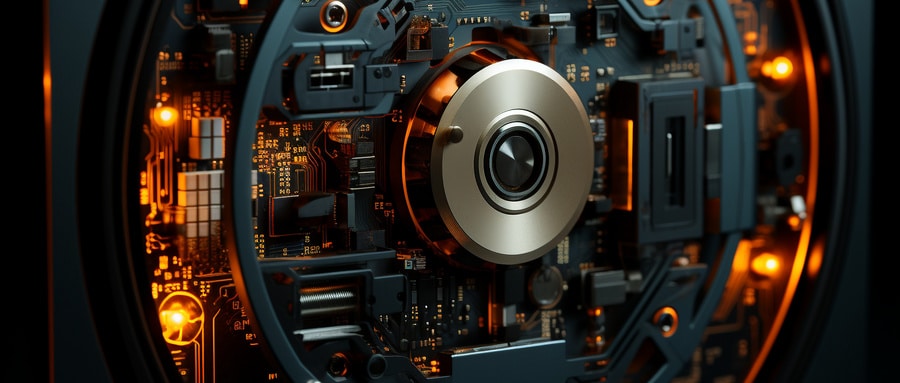A Deep Dive into 4-Layer PCBs: Design Complexity and Advantageous Applications
Multi-layer PCBs (Printed Circuit Boards, or PCBs for short) offer a versatile and effective means to build compact devices with high performance, while 4-layer PCBs stand out as particularly efficient devices due to their balance between compactness, cost-efficiency and high functionality. Let’s delve into their fascinating world while exploring their design features and advantageous applications.
What exactly is a 4-layer PCB? Simply stated, it is a circuit board consisting of four copper layers held together with insulation. A 4-layer PCB typically features three different layer arrangements – top layer for component placement or signal routing purposes; two inner layers usually used for power distribution or signal routing purposes; and the bottom soldering layer.
Four-layer PCBs open the way for more sophisticated circuit designs without incurring compensations associated with single or double layer boards. Two of its internal layers often serve as power planes for convenience of access to power and ground planes at short distances for improved power integrity, noise reduction, and routing high-speed signals.
Fabricating a four-layer PCB production follows similar steps as those for two layers, with one key difference: lamination. Lamination involves applying heat and pressure to permanently bond layers together using adhesive, providing electrical connections through vias or plated holes in between each layer.
4-layer PCBs find widespread application in computer hardware, telecoms, industrial controls and automotive electronics – even consumer electronics where high speed signals or compact sizes are essential.
A 4-layer PCB offers compact devices an edge by accommodating more components in limited spaces while attenuating electromagnetic interference (EMI), an essential factor when working with high frequency applications.
Thermal management benefits are further improved when an inner layer serves as a ground plane, enabling more even heat distribution and mitigating overheating issues that often accompany high-speed or high-power applications.
On a cost basis, production cost for multilayer PCBs may be higher due to increased complexity; however, this difference can be offset by decreased component costs, overall product size reduction and enhanced device performance.
As technology progresses, demand for smaller and more complex devices continues to increase. 4-layer PCBs’ benefits of compactness, functionality and performance make them increasingly popular choices within the electronics industry.
At its heart, 4-layer PCBs represent a complex blend of design complexity and practical utility. As the foundation for modern electronics devices and propelling us further into digital advancements, 4-layer PCBs form an indispensable part of modern life – this detailed guide seeks to shed some light on this topic while showing their impactful evolution within electronics manufacturing.

4-Layer PCBs FAQ:
- What is a 4 Layers PCB?
A 4 layers PCB is a circuit board that consists of four layers of conductive material (usually copper) stacked together and separated by layers of insulation. - Why would I choose a 4 Layers PCB over a 2 Layers one?
A 4 layers PCB can provide several advantages over a 2 layers PCB, including better electromagnetic interference (EMI) shielding, more space for routing, and potential improvements in signal integrity. - How is a 4 Layers PCB constructed?
A 4 layers PCB typically consists of a dielectric core with a copper layer on both sides, and then additional prepeg and copper layers added on the top and bottom. This allows for two internal power planes and two outer signal layers. - What are the typical thicknesses of a 4 Layers PCB?
The typical thickness of a 4 layers PCB is about 1.6mm, but other thicknesses may be available depending on the specific design requirements and the manufacturer’s capabilities. - How is a 4 Layers PCB designed?
Design of a 4 layers PCB requires careful planning of the layer stack-up, trace routing, and the placement of components. Specialized software tools are often used to assist with this process. - Are 4 Layers PCBs more expensive to produce than 2 Layers PCBs?
Yes, due to the additional complexity and materials involved, 4 layers PCBs are generally more expensive to produce than 2 layers PCBs. - Is the manufacturing process for a 4 Layers PCB different from a 2 Layers one?
The basic steps in the production process are similar but a 4 layers PCB involves more complex layer stack-up and lamination processes due to the additional conductive and insulating layers. - Are there any special considerations when soldering 4 Layers PCBs?
Soldering a 4 layers PCB is similar to a 2 layers PCB, but care should be taken to account for the additional heat capacity due to the increased layer count and to ensure proper solder flow to all connections. - How does a 4 Layers PCB improve signal integrity?
A 4 layers PCB can provide separate layers for power and ground planes, which can lower inductance and reduce noise, thereby improving signal integrity. - What applications commonly use 4 Layers PCBs?
Four layers PCBs are commonly used in more complex electronic devices, such as computers, telecommunications equipment, GPS technology, and industrial controls, among others.























